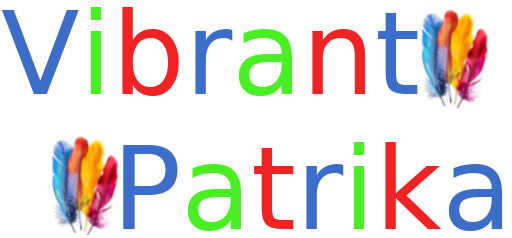Every child is unique in the way they learn, think, and process information. However, some learners face persistent challenges in reading, writing, comprehension, or math despite having normal intelligence. These challenges are often linked to learning disabilities (LDs). Globally, about 5–15% of children struggle with some form of LD, making it crucial for educators, parents, and society to understand and support them.
In this blog, we’ll explore:
- What learning disabilities are
- Common types and signs
- Strategies to support learners
- Role of parents and teachers
- Global perspective on inclusive education
If you’re interested in other educational guides, you may also check out our article on Financial Literacy: Budgeting Basics for Students or our detailed post on AI in Everyday Life: Smart Assistants & Beyond.
What Are Learning Disabilities?
A learning disability is a neurological condition that interferes with a person’s ability to acquire, process, or use information effectively. It doesn’t mean a lack of intelligence; in fact, many individuals with LDs are highly intelligent and creative.
Unlike general learning difficulties caused by environmental or social factors, learning disabilities are lifelong conditions rooted in brain function. Early identification and support can help learners overcome barriers and succeed academically and socially.
Common Types of Learning Disabilities
- Dyslexia (Reading Disorder)
- Difficulty recognizing words, spelling, and understanding texts.
- Students may read slowly, confuse letters, or struggle with comprehension.
- Dysgraphia (Writing Disorder)
- Problems with handwriting, spelling, and organizing written work.
- Writing may appear messy or inconsistent.
- Dyscalculia (Math Disability)
- Struggles with numbers, calculations, and understanding mathematical concepts.
- Learners may find it hard to tell time or manage money.
- ADHD (Attention Deficit Hyperactivity Disorder)
- Difficulty focusing, controlling impulses, or sitting still.
- Not strictly an LD but often overlaps with learning challenges.
- Auditory Processing Disorder (APD)
- Trouble understanding sounds and spoken instructions.
- Learners may often ask “What?” or misinterpret directions.
- Nonverbal Learning Disabilities (NVLD)
- Strong verbal skills but difficulties with nonverbal cues, coordination, and visual-spatial tasks.
👉 To learn more about brain function and innovations, check our post on Basics of Quantum Computing: A Beginner’s Guide.
Early Signs of Learning Disabilities
Identifying LDs early can make a significant difference. Warning signs include:
- Delay in speech development
- Difficulty recognizing letters or numbers
- Struggling to follow instructions
- Poor memory for sequences (like days of the week)
- Avoiding reading or writing tasks
- Reversing letters (e.g., writing b instead of d)
If these signs persist, it’s important to consult a psychologist or special educator.
Impact of Learning Disabilities
Learning disabilities can affect more than academics:
- Emotional Impact: Frustration, low self-esteem, and anxiety.
- Social Challenges: Difficulty making friends, being misunderstood.
- Career Choices: Without support, students may face limited opportunities.
However, many famous personalities like Albert Einstein, Steven Spielberg, and Tom Cruise had LDs and still excelled in their fields. This proves that with the right support, learners can thrive.
How to Support Learners with Learning Disabilities
1. Individualized Education Plans (IEPs)
Schools can design customized learning programs tailored to a student’s needs.
2. Multi-Sensory Learning
Using visual, auditory, and kinesthetic methods helps students grasp concepts better.
3. Assistive Technology
- Text-to-speech software
- Audiobooks
- Speech recognition tools
These resources make learning more accessible.
4. Encouragement & Positive Reinforcement
Motivating students by celebrating small achievements boosts confidence.
5. Teacher Training
Educators should be trained to identify LDs early and adopt inclusive practices.
👉 You can also explore our guide on How to Write a News Story: Journalism Basics for Students to understand structured learning techniques.
Role of Parents in Supporting Learners
- Patience & Understanding: Avoid comparing your child with others.
- Home Support: Engage in fun reading or math activities.
- Collaboration with Teachers: Stay in touch with schools to monitor progress.
- Counseling: Emotional support plays a vital role in keeping children motivated.
Global Perspective on Inclusive Education
Countries like Finland, Canada, and the USA have made significant progress in inclusive classrooms. India is also working toward the National Education Policy (NEP 2020) that emphasizes special needs education.
Inclusive education benefits everyone:
- Students with LDs feel accepted.
- Other students learn empathy.
- Teachers grow in adaptability.
👉 Related reading: Fun with Fibonacci: Nature’s Famous Sequence – a great example of how learning patterns can be taught in creative ways.
Myths vs Facts about Learning Disabilities
- Myth: Learning disabilities mean low intelligence.
- Fact: Students with LDs can be highly intelligent and successful.
- Myth: LDs are caused by laziness.
- Fact: They are neurological, not behavioral.
- Myth: Children outgrow LDs.
- Fact: LDs are lifelong but manageable with support.
Learning disabilities are not roadblocks but different learning pathways. With awareness, inclusive practices, and supportive tools, every learner can unlock their true potential.
As educators, parents, and peers, it is our collective responsibility to build environments where students with LDs feel empowered, not excluded.
If you found this post helpful, you might also like our article on Understanding CRISPR: Gene Editing for a Better Tomorrow, which explains another fascinating aspect of human development and science.

















